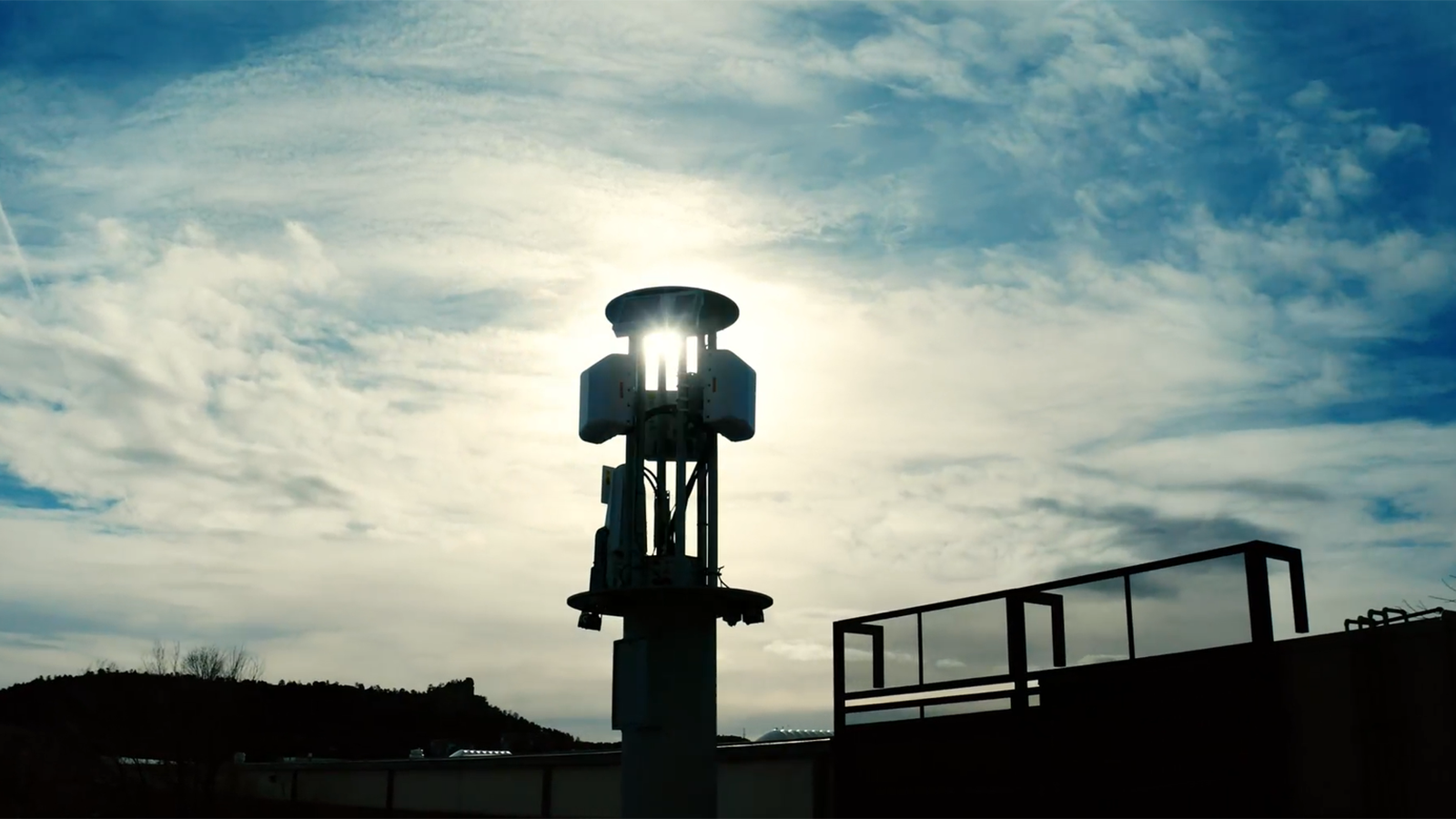
An antenna shown in a video made by Arlington-based startup SEMPRE. (Screengrab)
WASHINGTON: The Homeland Security Department’s cyber agency has assured lawmakers that it is working to understand the potential impacts of an electromagnetic pulse (EMP) on 5G cellular communications, as the US government — including the Pentagon — rushes to keep pace with China.
“We are certainly concerned about a range of risks, natural or human cause that could degrade our critical infrastructure and national critical functions,” Eric Goldstein, executive assistant director for cybersecurity at the department’s Cybersecurity and Infrastructure Security Agency (CISA) told lawmakers last week at a hearing of the House Homeland Security subcommittee on cybersecurity, infrastructure and innovation.
“Within CISA, our National Risk Management Center, or NRMC, is deeply focused on understanding how EMP risks could manifest to affect our national critical functions, and then understanding how critical infrastructure can adopt measures in place to reduce the likelihood of those risks occurring as part of that work,” he added.
An EMP — a pulse of energy that creates a powerful electromagnetic field capable of short-circuiting a wide range of electronic equipment, particularly computers, satellites, radios, radar receivers and even civilian traffic lights — can be caused naturally by a massive flare emanating from a solar storm, or by the deliberate detonation of a nuclear weapon in the atmosphere.
RELATED: The EMP-proof truck: AM General doubles down on humvee
Some experts have long been skeptical of a man-made EMP threat, but Goldstein’s comments came in response to questioning by Rep. Diana Harshbarger, R-Tenn., who expressed concern that the government wasn’t moving quickly enough to explore commercial technology that could weather an EMP event.
“The whole point is to keep our telecommunications survivable,” she said. “How is CISA evaluating the emergence of commercial EMP survivability? The second part is how quickly is CISA able to scale commercial EMP survivability to harden and enable the National Network against EMPs? And the third part of the question is what does CISA need to do to prepare for potential response?”
In particular, Harshbarger noted that she had recently reviewed research published by a private firm that showed two current smartphone models, Apple’s iPhone 12 and the Samsung’s Galaxy S-21 Ultra 5G, could withstand an EMP punch.
While Goldstein said that he was unfamiliar with that particular study, he stressed that CISA is working “closely with owners and operators of infrastructure that could be impacted, as well as with vendors of solutions that may provide technology that could be available as solutions.”
The research to which Harshbarger was referring was commissioned by Arlington, Va., startup SEMPRE, which specializes in electromagnetic hardening for cellular communications up to military standards (known as MIL-SPEC). It was conducted by another company specializing in electromagnetic hardening, Jaxon Engineering, based in Colorado Springs, Colo.
Robert Spalding, SEMPRE CEO, told Breaking Defense that while certain smartphones have inherent protection, most of the cellular networks they would use do not.
“Infrastructure today is not hard; it’s not survivable — at least what we’re talking about here, that is commercial infrastructure,” Spalding said in an interview on May 20.
“One of the challenges that you have today is that in whether you’re talking about China or Russia or Iran or North Korea, they all see EMP as an asymmetric capability in their in their ability to go after a rival or a a potential target,” he elaborated.
“There are also solar flares that can cause the same kind of damage to the same infrastructure. So, we have something called the Carrington Event … basically a massive coronal ejection if there is a sunspot,” Spalding added. “And if that sunspot hits North America, it is going to cause a lot of the same damage that a high altitude nuclear weapon would. We’ve had a number of near misses, but it’s only a matter of time, before you know, a certain portion of population gets hit with that.”
SEMPRE is using commercial off-the-shelf tech to build battlefield cell towers and communications networks, and in March boasted that the recently retired four-star head of Air Force Global Strike Command, Timothy Ray, had joined as a strategic advisor.
This spring, the firm wrapped up a Phase 2 Small Business Innovation Research, or SBIR, contract with the Defense Department, said Spalding, himself a retired B-2 pilot and Air Force nuclear operator.
“We completed that, now we’re working on in that next phase,” he said.
The SBIR contract was “to demonstrate how you take a a 5G core, which is really the brains of the 5G network, and secure it against vulnerabilities and do other things. We’ve gone above and beyond on securing the 5G core, in terms of how we make sure that that core can’t be breached,” Spalding explained. “We’re pairing that 5G core along with other software to basically make these nodes into a system of systems … and we’ll be working with the DoD to be put on contract.”
L3Harris selloffs hampered by low bids, CEO says
“To the extent we can get a good price for what we’ve identified as non-core [businesses], we’ll do it. But too many of the offers are coming in low and people think we’re desperate to sell, and I can assure you we’re not,” said L3Harris CEO Chris Kubasik.



























